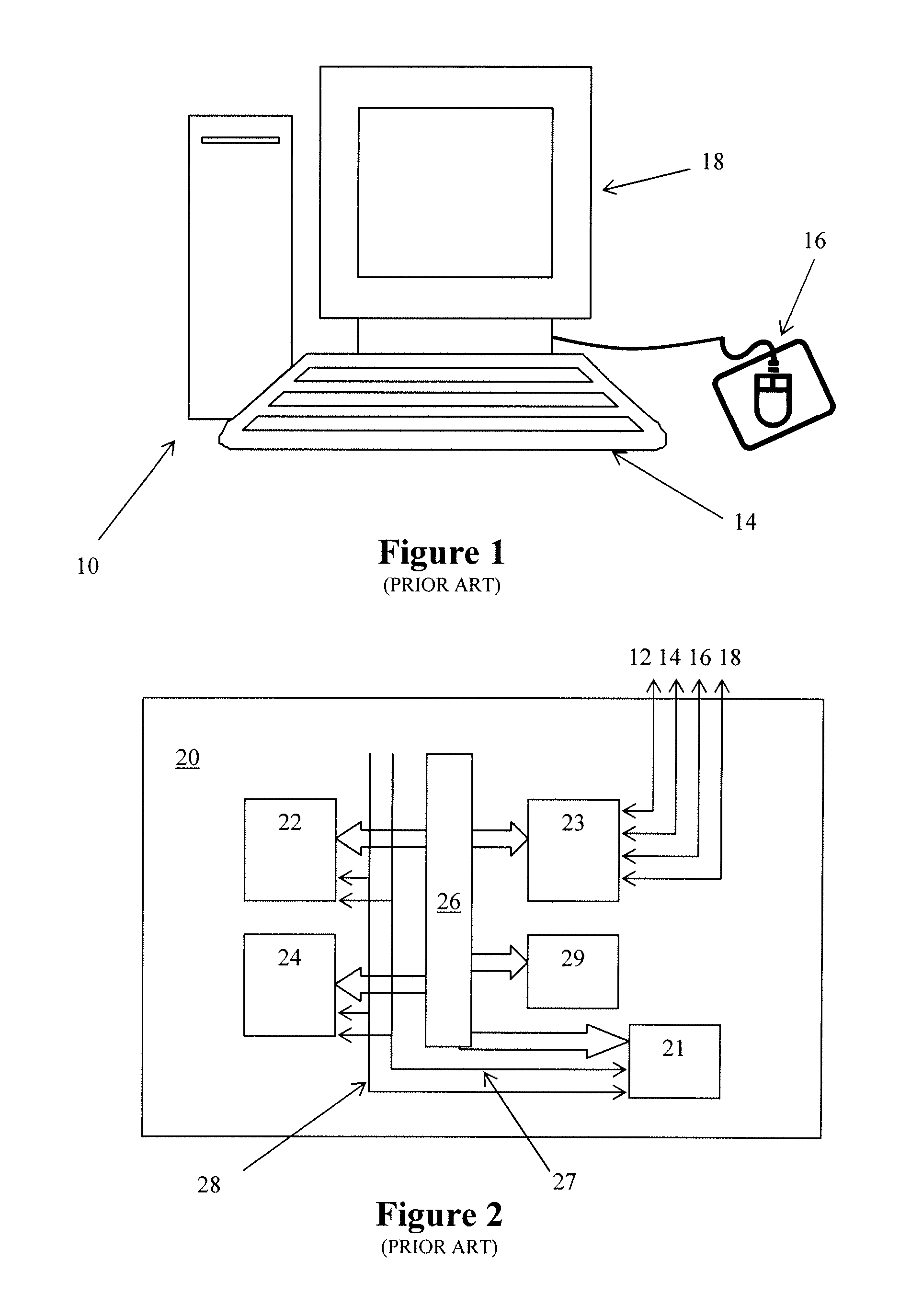Trusted key management for virtualized platforms
a virtualized platform and key management technology, applied in the field of providing secure services, can solve the problems of data remaining unencrypted on the disk, severe security requirements, and insufficient techniques by themselves
- Summary
- Abstract
- Description
- Claims
- Application Information
AI Technical Summary
Benefits of technology
Problems solved by technology
Method used
Image
Examples
first example
Prior-Art Trusted Platform—Overview
[0110]An example trusted platform 10 is illustrated in the diagram in FIG. 1. The computing platform 10 is shown as a so-called personal computer and is entirely conventional in appearance—it has associated the standard features of a keyboard 14, mouse 16 and visual display unit (VDU) 18, which provide the physical ‘user interface’ of the platform. The computing platform 10 is arranged to run a standard operating system such as Microsoft™ Windows XP™.
[0111]As illustrated in FIG. 2, the motherboard 20 of the trusted computing platform 10 includes (among other standard components) a main processor 21, main memory 22, a trusted entity here embodied in the form of trusted device 24 (such as a hardware TPM), a data bus 26 and respective control lines 27 and address lines 28, BIOS memory 29 containing the BIOS program for the platform 10, an Input / Output (IO) device 23, which controls interaction between the components of the motherboard and the keyboard...
example trusted
Device
[0114]Further details will now be given of an implementation of the trusted device 24, it being understood that corresponding functionality can be provided in a software trusted entity (that is, virtual trusted device).
[0115]The trusted device 24 comprises a number of blocks, as illustrated in FIG. 3. As already indicated, after system reset the trusted device 24 participates in an authenticated boot process to ensure that the operating state of the platform 10 is recorded in a secure manner. During the authenticated boot process, the trusted device 24 acquires at least one integrity metric of the computing platform 10. The trusted device 24 can also perform secure data transfer and, for example, authentication between it and a smart card via encryption / decryption and signature / verification. The trusted device 24 can also securely enforce various security control policies, such as locking of the user interface; in a particularly preferred arrangement, the display driver for th...
second example
Prior-Art Trusted Platform
[0141]Assuming that integrity metrics are recorded for the operating system and applications loaded by the operating system, the above-described trusted platform 10 enables a user to check the state of the platform and decide whether or not to trust it. If the operating system has run an application that is not trusted by a first user (though possibly trusted by a different user), the first user can detect this (even after the application has terminated) by checking the relevant PCRs. However, in this case, for the above-described trusted platform, the only way for trust in the platform to be re-established for the first user is for the platform to be re-started. This drawback is multiplied where the platform is used to run a compartmented operating system supporting multiple computing environments since, unless appropriate measures are in place, running an un-trusted application in any of the environments requires the platform to be re-started to re-establ...
PUM
 Login to View More
Login to View More Abstract
Description
Claims
Application Information
 Login to View More
Login to View More - R&D
- Intellectual Property
- Life Sciences
- Materials
- Tech Scout
- Unparalleled Data Quality
- Higher Quality Content
- 60% Fewer Hallucinations
Browse by: Latest US Patents, China's latest patents, Technical Efficacy Thesaurus, Application Domain, Technology Topic, Popular Technical Reports.
© 2025 PatSnap. All rights reserved.Legal|Privacy policy|Modern Slavery Act Transparency Statement|Sitemap|About US| Contact US: help@patsnap.com



